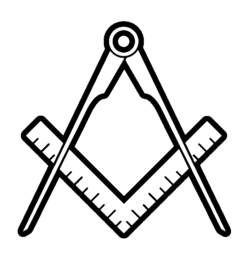Disclaimer: I don’t believe in fortune telling, but I do believe that the Tarot is useful in the sense that the images and ideas it presents can trigger subconscious thoughts, or help us identify emotions and goals that we weren’t previously clear on.
As of late, I’ve been doing (almost) daily Tarot single-card draws in order to try and better familiarize myself with the Tarot. I don’t have a lot of experience with doing full spreads, so I decided to start with an easy Past/Present/Future spread. Today, I am using the Marseilles Tarot, and I do not use reversals.
Question: What do I need to concentrate on in the next month?
Spread:
- Past: The Hanged Man (12)
- Present: King of Coins
- Future: Nine of Rods
Okay, so I have no idea what I’m looking at here. I’m going to try writing my initial impressions of each card first, then look up its meanings.
Past – The Hanged Man (12)
Initial Impressions
I associate the Hanged Man with being at peace, taking in the world passing by, letting go, and enlightenment. He feels similar to the Hermit, but in a way that accomplishes things. I feel like this is saying that I have done a lot of introspection in the past and have been seeking knowledge. Cyclically, he reminds me of the High Priestess, who instructs the fool in accessing his unconscoius mind and developing his potential.
Post-Research
Things that the Hanged Man are associated with are: letting go, reversing orders/opinions, suspending action, and sacrifice. The primary description seems to be centered around non-attachment and disinterested analysis. He is associated with water and the Hebrew letter מ (Mem). This seems to be pretty much in line with what my initial impressions were, minus the sacrifice bit, which hadn’t popped into my mind.
Present – King of Coins
Initial Impressions
I’m really weak with the Court Cards. I’m going to spitball here with a bunch of loosely-connected ideas.
- The King is an authoritative father figure.
- Kings are associated with the Yod in יהוה, so they represent the initial desire and first step of creation.
- Kings represent Fire.
- Coins are related to the material world – often literally money.
- Coins represent Earth.
Maybe I’m currently looking for a mentor to help me with money? I don’t feel like that’s right. Perhaps this is the representation of a desire to manifest real, physical results of something in some manner.
Post-Research
Kings as the “fire of earth” card represent an enterprising, adept, reliable, supporting, and steady spirit. This King is dedicated to the task at hand and does it well. He represents working hard, methodically, and to completion.
Based off of my initial impressions and the reading I did, it seems to me that the King of Coins in the Present positiion represents the existence (or need of) a firm resolve.
Future – Nine of Rods
Initial Impressions
Let the spitballing begin!
- Nines are associated with the Hermit (seclusion, escape, wisdom, learning).
- Rods are associated with desire, creativity, journeys, and fire.
Do I need to travel somewhere alone? Do I need to be creative in seclusion? I’m at a loss here.
Post-Research
It seems that nines are associated with approaching the end of a cycle. The nine of rods/wands represents defending oneself, persevering, showing stamina, and great strength. The journey is coming to a close; work cannot continue much longer. The Nine of Rods is associated with Yesod and connecting to the task to accomplish.
I feel like the Nine of Rods goes really well with the King of Coins.
Summary
Based off of this reading, I have been contemplating, learning, and changing my mind. Currently, I need to persevere with a firm resolve, and the end is in sight.
What is the task at hand, though? I drew a clarification card and it was the Ace of Rods, which represents fire, the creative desire, and zeal. I wonder where that leads.
